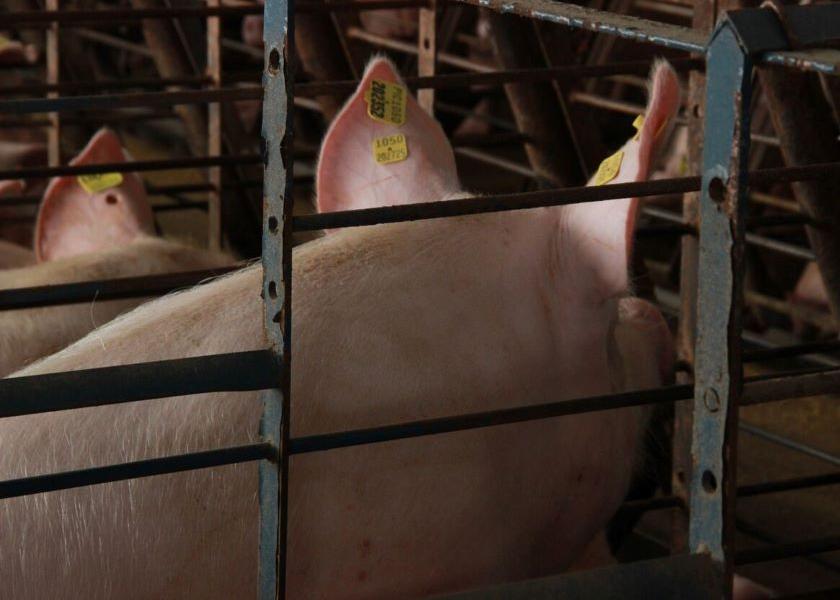Adopt Strategies to Improve Your Farm’s Sow Longevity Rate

Attention to sow longevity is so important because of the multiple ways it can affect a producer’s economics.
Generally a gilt surpasses its breakeven point on your investment in it once she is a Parity 3 (P3) sow — when she delivers her third litter. That’s when we see she has returned more than the investment made into her vet care and feeding, vaccinations, human labor to care for her, inseminations and the like.
The increase in sow mortality rate on farms over the past dozen years has been exhaustively documented in media, white papers and webinars — with the industry average sitting around 12% right now.
Many raising pigs just a few decades ago can remember when sows were mainly kept in outdoor pens and fed less rigorously. Our harsh Midwest winters and sweltering summers resulted in hardy gilts and sows with a mortality rate as low as 2% that might keep delivering litters to P9, P10, P11 or further — but fewer pigs per litter than now. Their bodies converted feed into keeping their immune and metabolic systems strong, and less toward the requirements of reproduction.
In contrast, today’s indoor sows are ultra-performance animals for breeding. If we were to compare one to a racecar, we might say when they have the right mix of feed (fuel) as well as veterinary (mechanic) and on-farm (pit crew) care, they are champions that can wean 35 piglets, or about 2.5 litters, per year. But if just one of those inputs slides in quality or the animal’s body doesn’t work so well, the metaphorical racecar can hit a wall. After all, Mother Nature tends to only let something be talented at so many things — a pig can be hardy for itself and good at producing large litters, but only with precisely managed inputs and conditions.
A swine farm relies on consistently weaning young pigs for its revenue, and it’s critical to hit your weekly breeding target. If you do not breed enough animals this week, in 17 weeks you won’t be able to farrow your target number of sows … and three weeks after that you won’t wean your target number of young pigs, either. Let’s examine some ways in which producers may better influence the factors they can control to increase sow longevity.
Curbing Mortality
The bulk of sow deaths occur right around farrowing time, with more than half dying within the 10 days before or 10 after birth. It’s also the most financially devastating time for you as a farmer to lose the sow, since it’s not just them but also possibly their litter. If a pig dies before she was to be bred, or when more newly inseminated, you may be able to substitute a “benched player” — a less desirable gilt, or a sow you were going to leave out of rotation — in the week’s breeding lineup to at least hit target, even if you may not breed the animal again.
Three leading causes of death for sows are lameness, sudden deaths that require investigation and pelvic organ prolapse (POP). Recently, the Iowa Pork Industry Center, with special funding from the National Pork Board, assembled researchers to study causative factors of POP.
As part of their findings they put forth improved management practices producers can use, as well as perineal scoring — a tool that assesses pregnant sows during late gestation for their level of POP risk. Other recommendations include consideration of gilt size at breeding and guidance on pre-farrow feeding and monitoring sows’ body condition.
Perhaps the most important thing you can do to help mitigate sow mortality is to try to identify those that look like they need special treatment and management strategies. The best time to do this is each morning, when you feed, since each animal should be motivated to get up and walk around to eat.
Look at every pig briefly as they move, to see if they are exhibiting poor body condition, lameness or symptoms of illness such as cough or diarrhea — you don’t need to spend several minutes on one animal if you notice a problem, just make a note of which one it is, since the goal is to try to gauge each pig on her feet before they lie back down. Definitely make a note of any that do not get up and move around, as well as those that are not eating.
Later, you or an employee or even an intern with veterinary training can revisit the building and examine the pigs that you identified as “of concern.” Start with the sows closest to their farrow date and work your way back toward any newly-bred animals of concern.
Probably one of the biggest issues we see affecting sow health in this kind of daily assessment — if the farm is not dealing with a big infectious disease problem — is constipation. If nothing else is wrong with the animal and she can walk, she may just need some extra time outside the crate to walk and “jostle things around” so feces can pass. If it’s a more severe case, a laxative may be in order.
Culling Effects
If your target mated inventory is 6,000 sows and your weekly target is 60 newly-bred gilts or sows, you are also likely culling the same number of sows each week. As mortality numbers have increased, it follows that producers have had to cull fewer live animals to maintain that number (if you normally cull 60 and eight died this week, you’ll only cull 52). What if that eight increases to 24, though? That’s only 36 culled animals.
This is admittedly not a big difference for one week on one farm, but imagine it happening on thousands of farms, and/or for longer than a week, and this lower number of culls adds up — or rather, it doesn’t anymore. This lack of culls for pork processors has led to a major shift in the supply chain, not to mention more paid for the animals under basic economics of “reduced supply + consistent demand = higher prices.” The volatility we are seeing in cull prices is here to stay until the industry brings down the mortality rate.
You cannot eradicate sow mortality in your herd. But by addressing the factors over which you have some measure of control, you may be able to bring that number down with consistent application of improved management practices to reduce constipation, spot lameness or other illness and improve factors that affect POP. Focusing on identifying pigs in need is the first step in a solid mortality reduction strategy.
Read More:







